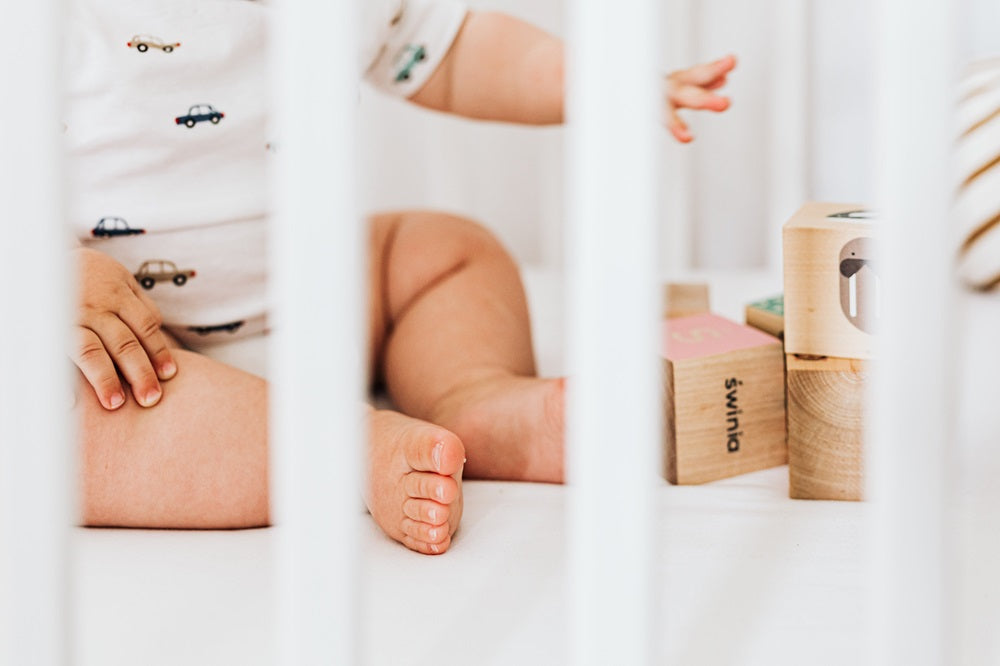The last thing any parent wants is for their child to get hurt, yet every year, more than 2,600 children under five are admitted to hospital with an injury. While we can’t wrap our little ones in cotton wool (as tempting as that may be), we can take steps to safeguard them from dangers in their environment. In this article, we’ll share some of the most impactful things you can do to create a safe nursery and sleeping environment for your child.
Safeguarding High Risk Areas
Within any nursery, there are a few areas that new parents should pay particularly close attention to. These hot spots create the greatest potential for risks, most of which can be easily avoided with a few small changes.
Fix Your Furniture
When choosing furniture for your nursery, opt for rounded edges and smooth finishes to help minimise the risks of bumps and bruises, both for you and your child. You should also firmly secure all furniture to the wall to prevent tipping in the event of an earthquake and as your little one begins exploring.
Nursery furniture can be a big investment, but it’s safest to buy new if you can. Consider buying high-quality items that will last longer, stretching the value of your investment over a longer period.
Crib & Cots
While a cot should be where your child is safest, the reality is that many babies are injured in their beds due to oversights from well-meaning parents.
Remove any loose fabrics from your child’s cot, including soft toys, blankets, pillows and cot bumpers. Instead, opt for a fitted sheet and swaddle or a correctly sized grobag. Additionally, make sure the mattress height is suitable for your child, preventing them from being able to roll or crawl out as they grow.
Mattress Matters
Babies and toddlers spend a lot more time asleep than the average adult, so it makes sense to provide them with a quality mattress. Choose a firm mattress which prevents accidental suffocation while also supporting your baby’s alignment.
Learn about the Airnest Cot Mattress.
Additional Safety Measures for Toddler Bedrooms
As your little one grows, there are a few additional steps you can take to help protect them from injuries. Toddlers are naturally curious and can get into mischief in the blink of an eye. By safeguarding their environment, you can allow them to explore while reducing the risk of them hurting themselves.
If you have hard flooring, use soft rugs or padded mats to provide extra comfort and protection if your little one takes a tumble. Soft flooring can also prevent slipping, which is a risk to both toddlers and adults carrying their children.
Install secure window guards or latches to prevent windows being able to be opened by adventurous hands. Accidental falls can be dangerous from any height, so latching your windows is a must.
General Safety Tips For The Home
- Use childproof locks on all cabinet doors and drawers to keep dangerous items out of reach.
- Move all electrical cords and wires out of reach, ideally securely behind furniture.
- Store small objects like coins, buttons and small toys out of grasp.
- Make sure your smoke detectors and fire extinguishers are functioning and accessible.
- Always have a well-stocked first-aid kit within easy reach.
Do you have a question about nursery safety? Our team would love to help. Contact us today to learn more.

